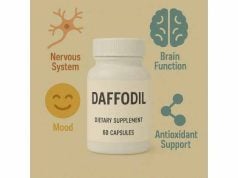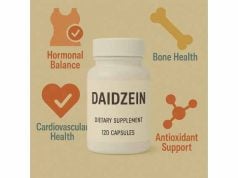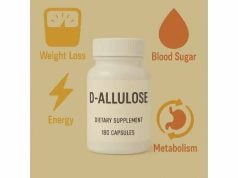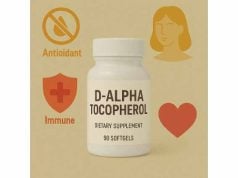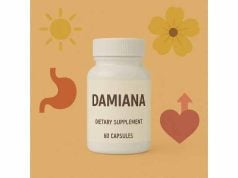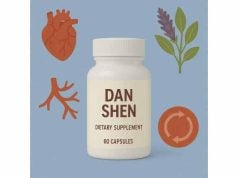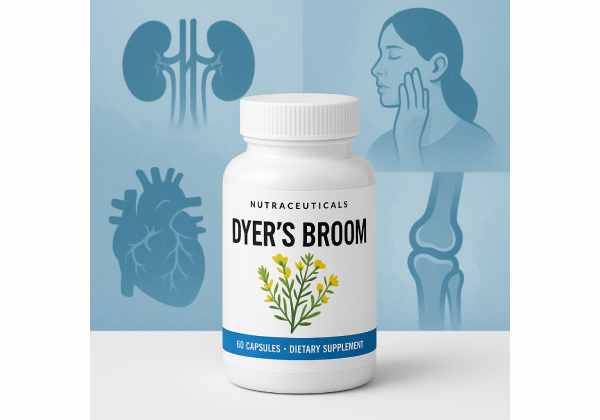
Dyer’s broom (Genista tinctoria), also called dyer’s greenweed, is a small European shrub best known for producing brilliant yellow dye. Beyond textiles, it has attracted interest because its flowering tops contain notable flavonoids (especially luteolin and apigenin) and the isoflavone genistein—first isolated from this very plant. Interest in these compounds centers on antioxidant and anti-inflammatory actions seen in lab studies. At the same time, Genista species can also produce quinolizidine alkaloids—naturally occurring defense chemicals that may pose safety concerns if concentrated or misused. This guide explains what is actually known about dyer’s broom, how people use it today, why dosing is not established, what to watch for with safety, and where the evidence stands so you can make an informed, cautious decision.
Essential Insights for Dyer’s Broom Users
- Rich in flavonoids (e.g., luteolin) and a natural source of genistein; evidence of benefits is mostly preclinical.
- Contains quinolizidine alkaloids in some preparations; avoid concentrated or unverified extracts.
- No established supplement dose; most prudent oral intake is 0 mg/day unless supervised clinically.
- Avoid use if pregnant or breastfeeding, in children, with cardiovascular disease, or when using nicotine-acting drugs.
Table of Contents
- What is Dyer’s Broom?
- Does it really offer health benefits?
- How people use it today
- How much and how to take it
- Safety, interactions, and who should avoid
- Evidence summary at a glance
What is Dyer’s Broom?
Dyer’s broom (Genista tinctoria L.) is a low, woody member of the Fabaceae (legume) family native to meadows and pastures across Europe and parts of Western Asia. Historically, dyers prized the plant’s aerial parts—especially the flowers and young shoots—for producing a bright, light-fast yellow; combined with indigo or woad, it yielded stable greens used in textiles and tapestries. That dyeing history is so central that the Latin epithet tinctoria literally means “used in dyeing.”
From a phytochemistry perspective, dyer’s broom is notable because it contains several bioactive polyphenols. Analyses of Genista tinctoria extracts have repeatedly identified flavones such as luteolin and apigenin, and the isoflavone genistein. In fact, genistein was first isolated in 1899 from Genista tinctoria, which is why it bears the plant’s name. Modern chromatographic work has quantified multiple flavonoids in extracts from the aerial parts, frequently detecting luteolin, genistein, and others in measurable amounts. These constituents underpin most of the interest in dyer’s broom beyond dyeing, since they are linked to antioxidant capacity in vitro and other mechanistic effects explored in cell models.
It is equally important to understand what dyer’s broom is not. It is sometimes confused with Scotch broom (Cytisus scoparius), another shrubby legume with conspicuous yellow blooms. While both are “brooms,” their chemical profiles and risks differ. Cytisus species are well known for higher levels of quinolizidine alkaloids such as sparteine; Genista species, including G. tinctoria, can also contain quinolizidines, but levels vary by species, plant part, and extraction method. Because quinolizidine alkaloids are plant defense compounds that can affect nicotinic receptors in animals, their presence in any Genisteae preparation is a key safety consideration—especially for concentrated extracts intended for ingestion.
In practice, most contemporary uses of dyer’s broom remain artisanal and topical (dyeing fibers), where ingestion is not part of the process. Interest in internal use comes mainly from dyer’s broom’s role as a natural source of genistein and luteolin—well-studied compounds in their own right—rather than from human trials on G. tinctoria products. That distinction frames the rest of this article: where evidence relates to the whole plant versus isolated compounds, and how that should guide responsible use.
Does it really offer health benefits?
When people ask about benefits, they’re often reacting to headlines or mechanistic studies of genistein and luteolin—two compounds that dyer’s broom happens to contain. Genistein has been widely investigated for antioxidant, anti-inflammatory, and estrogen-receptor–modulating effects in cell and animal models, and it shows plausible mechanisms touching pathways like NF-κB, Akt, and Wnt/β-catenin. Luteolin is similarly studied for anti-inflammatory activity and potential neuroprotective actions in preclinical settings. Those lines of research help explain why a plant containing these molecules might draw attention.
However, two realities limit firm health claims for dyer’s broom itself:
- Evidence base is largely preclinical for the plant. The bulk of controlled research involves isolated genistein (often from soy) or luteolin, not standardized Genista tinctoria extracts in humans. Extrapolating directly from pure compounds to a complex botanical is unreliable without clinical data on the specific extract, dose, and population.
- Complex chemistry changes with preparation. The plant’s polyphenol content (e.g., genistein, luteolin) and potential alkaloid content can shift with growing conditions, harvest timing, plant part used, and extraction solvents. A water infusion, for instance, can differ dramatically from an alcohol-based tincture in both benefits and risks.
What this means for you: dyer’s broom may be chemically interesting but clinically under-characterized. If your goal is to explore genistein’s studied effects, standardized soy isoflavone products (with known genistein content and human data) are the better-documented route. If your goal is natural dyeing, dyer’s broom remains a classic, but those topical uses do not translate into proven internal health outcomes. Until human trials evaluate defined G. tinctoria extracts, any claimed benefits for sleep, metabolism, pain, or immunity should be treated as unproven hypotheses rather than established effects.
How people use it today
Textile dyeing. The most common and historically grounded use is dyeing protein fibers (wool, silk) a vivid lemon-yellow using the flowers and young shoots, often with alum or other traditional mordants. When over-dyed with indigo or woad, dyer’s broom produces stable greens with excellent lightfastness. For textile artisans, the plant is valued for its color reliability and the relative abundance of dye in the aerial parts. Because dyeing is an external process, safety considerations are mainly about handling plant material and mordants—not ingestion.
Herbal and supplement contexts. In some regions, dyer’s broom appears in folk recipes as teas or tinctures made from the flowering tops. Modern supplement interest stems from the plant’s content of polyphenols like luteolin and genistein. A few analytical papers have quantified these flavonoids in plant extracts, confirming their presence and providing baseline chemistry. That said, commercial products standardized to these markers are uncommon, and independent verification of label claims is rare. Without standardization, batches can vary, and the presence or absence of quinolizidine alkaloids is not guaranteed by marketing language alone.
Comparing to better-studied alternatives. If you are seeking the mechanistic effects attributed to genistein, consider standardized soy isoflavone extracts, which have human data and consistent dosing. If you are interested in luteolin, there are targeted luteolin supplements derived from multiple sources with defined content. Either approach provides a clearer risk-benefit profile than trying to approximate those doses by consuming dyer’s broom preparations.
Quality and identification tips. If you work with the plant for dyeing, be sure you have Genista tinctoria (dyer’s greenweed) and not a different “broom” species; photographs can be misleading. For any ingestible product, seek third-party testing and avoid extracts that fail to specify both marker compounds (e.g., luteolin, genistein) and alkaloid control (e.g., tested to be at or below defined limits for quinolizidine alkaloids). Given the variability of plant chemistry, this level of transparency is a minimum for responsible use.
How much and how to take it
There is no clinically established oral dose for dyer’s broom. No major pharmacopoeia or clinical guideline sets a standard posology for Genista tinctoria preparations, and modern trials on defined extracts in humans are essentially absent. Because Genista species can contain quinolizidine alkaloids (and because alkaloid extraction depends on solvent and method), adopting “traditional” recipes without safety controls is not a reliable path.
If your interest is genistein itself, note that human trials typically use standardized soy isoflavone products delivering defined amounts of genistein (not dyer’s broom extracts). Those studies inform genistein exposure from well-characterized sources, not from G. tinctoria. For luteolin, commercial supplements specify microgram-to-milligram content with batch testing; again, this is very different from ingesting a whole-plant extract with unknown composition.
Practical guidance for risk reduction (if you still choose to use it under professional supervision):
- Prefer not to ingest: the most conservative choice is to use dyer’s broom for dyeing only, not as a supplement.
- Avoid alcohol-rich tinctures unless the manufacturer provides alkaloid testing results; ethanolic solvents are more likely to co-extract alkaloids.
- Demand third-party certificates showing marker flavonoids (e.g., luteolin, genistein) and limits on quinolizidine alkaloids.
- Start low and stop at the first adverse symptom (nausea, dizziness, palpitations, headaches, or blood-pressure changes).
- Do not combine with nicotine replacement, cytisine, or varenicline, and avoid use alongside stimulants or MAO-active agents.
- Do not use in pregnancy, breastfeeding, or pediatric populations.
Bottom line: for ingestion, the safest daily dose is 0 mg/day unless you are under the care of a clinician who can review product analytics and monitor for adverse effects. If you want the putative benefits of its polyphenols, choose standardized alternatives with human data rather than this under-studied botanical.
Safety, interactions, and who should avoid
Alkaloid content is the primary safety issue. The Genisteae tribe (which includes Genista, Cytisus, and Lupinus) biosynthesizes quinolizidine alkaloids—defense compounds that plants concentrate in seeds and aerial parts. These molecules (e.g., cytisine, sparteine, lupanine types) can interact with nicotinic acetylcholine receptors and have caused poisoning in livestock and rare human exposures when ingested in meaningful amounts. Regulatory risk assessments for food and feed focus on lupins, but the broader chemistry and toxicology of quinolizidines are relevant whenever Genisteae extracts are consumed. For dyer’s broom, the risk depends on species identification, plant part, harvest timing, and—crucially—extraction method. Alcohol-based extracts are more likely to pull alkaloids along with polyphenols.
Potential adverse effects. Symptoms of quinolizidine exposure may include nausea, vomiting, dizziness, tachycardia or palpitations, hypertension or hypotension, headaches, tremor, and—in severe cases—respiratory depression. Because cytisine is a nicotinic partial agonist (used clinically for smoking cessation in controlled doses and formulations), combining dyer’s broom extracts with nicotine replacement or varenicline could amplify cholinergic effects in unpredictable ways.
Hormone-sensitive conditions. Genistein is a phytoestrogen. While data from soy isoflavones do not uniformly show harm, people with estrogen-receptor-positive cancers or those advised to limit phytoestrogen intake should avoid unstandardized botanical sources. If genistein is clinically indicated, your clinician may prefer a known, standardized product with established dosing and interactions.
Drug interactions and special populations.
- Do not use if pregnant, breastfeeding, or under 18.
- Avoid if you have cardiovascular disease, arrhythmias, uncontrolled hypertension, severe migraines, or seizure disorders.
- Use caution with antihypertensives, anticholinergics, cholinergic agents, stimulants, or MAO-active medications.
- Allergy caution: as a legume, Genista may cross-react in people highly sensitive to Fabaceae pollens or plant proteins.
- Environmental sourcing: wild plants can accumulate contaminants (e.g., heavy metals) depending on soil; never ingest material of uncertain provenance.
Quality signals to require from any ingestible product:
- Species confirmation (Genista tinctoria, not “broom” generically).
- Marker profile listing luteolin and/or genistein with amounts per serving.
- Alkaloid testing with specified method and upper limits for quinolizidines (ideally “not detected” or below a defined ppb threshold).
- Independent lab reports (COAs) per lot number.
Given these realities—and the lack of established human dosing—many readers will reasonably conclude that dyer’s broom is better kept in the dye studio than the medicine cabinet.
Evidence summary at a glance
What is well established
- Genista tinctoria is a historical yellow dye plant; flowers and young shoots are the richest sources for color.
- The plant contains notable polyphenols, including luteolin, apigenin, and genistein; modern chromatography has quantified these in aerial-part extracts.
- Genisteae plants biosynthesize quinolizidine alkaloids; these compounds can affect nicotinic receptors and carry toxicity risks when ingested in significant amounts.
What is promising but preliminary
- Mechanistic and preclinical studies on genistein show antioxidant, anti-inflammatory, and signaling-pathway effects; luteolin has comparable preclinical breadth.
- These findings explain interest but do not substitute for human trials on G. tinctoria extracts.
What remains unknown or unsupported
- No consensus human dose for dyer’s broom; no robust clinical trials on standardized G. tinctoria extracts.
- Real-world variability of alkaloid content across commercial products is poorly characterized.
Practical takeaways
- Prefer non-ingestive uses (dyeing).
- For ingestive goals, consider standardized, better-studied alternatives (e.g., soy isoflavone products for genistein; dedicated luteolin supplements) with clinician oversight.
- If you ever contemplate internal use of G. tinctoria, insist on species confirmation, alkaloid testing, and clear marker standardization—and discuss with a qualified professional first.
References
- Application of Hydrophilic Interaction Liquid Chromatography for the Quantification of Flavonoids in Genista tinctoria Extract (2016)
- Genistein: An Integrative Overview of Its Mode of Action, Pharmacological Properties, and Health Benefits (2021)
- Quinolizidine-Type Alkaloids: Chemodiversity, Occurrence, and Bioactivity (2023)
- Scientific opinion on the risks for animal and human health related to the presence of quinolizidine alkaloids in feed and food, in particular in lupins and lupin-derived products (2019)
- Molecular Pathways of Genistein Activity in Breast Cancer Cells (2024)
Disclaimer
This article is for educational purposes only. It does not provide medical advice and is not a substitute for professional diagnosis or treatment. Do not start, stop, or change any supplement or herbal regimen based on this information without talking to your licensed healthcare provider, especially if you are pregnant or breastfeeding, have a medical condition, or take prescription medications.
If you found this guide helpful, please consider sharing it on Facebook, X (formerly Twitter), or your favorite platform, and follow us for future updates. Your support helps us continue producing careful, high-quality content. Thank you.

